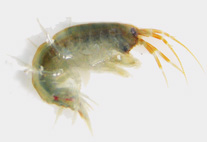Abstract
Phlebotominae, a group of insects with great medical importance especially in Brazil, are responsible for transmitting causal agents of cutaneous and visceral leishmaniasis. In Brazil, the most important species of Leishmania Ross, 1903 are L. (Viannia) braziliensis Vianna, 1911, whose main vectors are Nyssomyia intermedia Lutz & Neiva, 1912, Ny. neivai Pin-to, 1926, Ny. whitmani Antunes & Coutinho, 1939 and Migonemyia migonei França, 1920; and L. (Leishmania) amazon-ensis Lainson & Shaw, 1972, for which Bichromomyia flaviscutellata Mangabeira, 1942 is the main vector. The present study sought to investigate the morphological as well as geometrical and linear morphometric characteristics of these five sand flies in an attempt to cluster these species. Our aim was to reveal some of the characters that might help identify these phlebotomine species and also be useful in future phylogenetic studies. Comparative analyses by linear and geometric morphometric characters allowed us to distinguish the genera of these sand flies and assess the taxonomic position of Ny. intermedia and Ny. neivai, the so-called “cryptic species”. Significant differences were observed in several of the analyzed structures, including the centroid size of the wings and the ratio between the ejaculatory filament and its tip. Based on the linear morphometric analytical results, the size of the centroids of the wings and their shapes indicated that these three species of Nyssomyia are phenetically more similar to Mg. migonei (all vectors of L. (V.) braziliensis) than to Bi. flavis-cutellata (vector of L. (L.) amazonensis). These results are in agreement with the division of the genera Nyssomyia and Bichromomyia.

